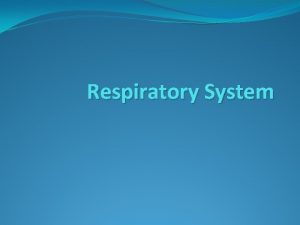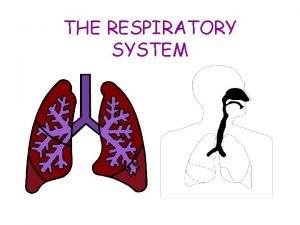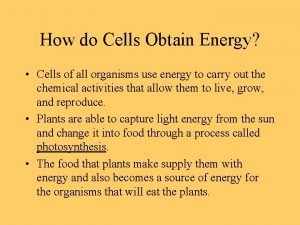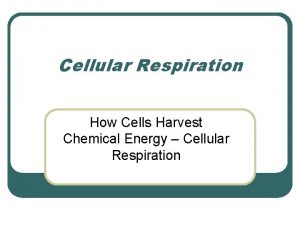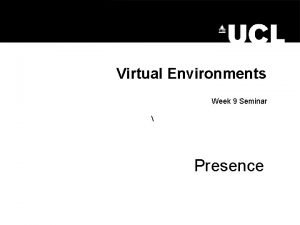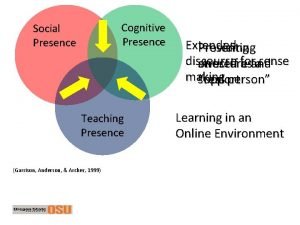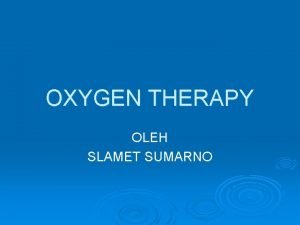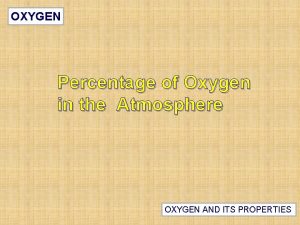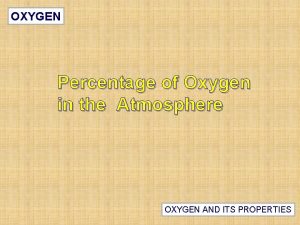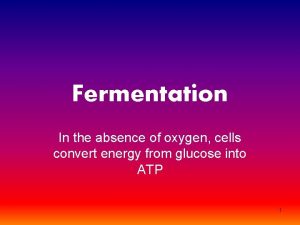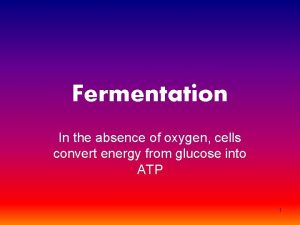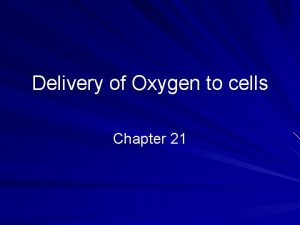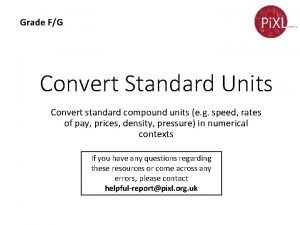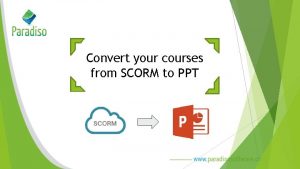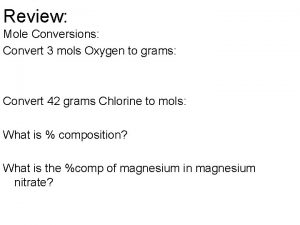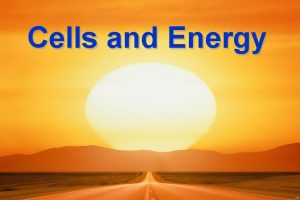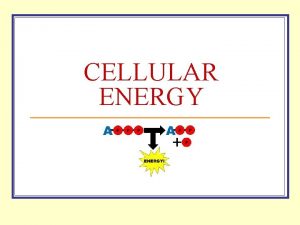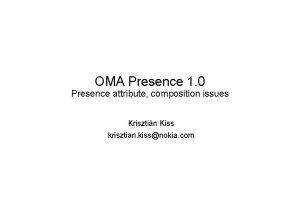In the presence of Oxygen Cells convert energy























- Slides: 23

In the presence of Oxygen, Cells convert energy stored in Glucose into ATP 1

Flow of Energy 2

All living things must be able to convert glucose into ATP. 3

Adenosine Triphosphate 4

: n o i t a r i p m s o r e f R ed s c i a e b l e o e r r h t y e l A low P in l P s T s A i e y k g a r. e n m n e o g E t y e x s o o f c o e glu c n e s e r p 5

Energy is released from Glucose through “burning” with oxygen. 6

Energy (in the form of glucose) is supplied by the foods you eat. 7

Oxygen is supplied by the air you breathe, and Carbon dioxide is released into the atmosphere. O 2 8

Plants make their own glucose through Photosynthesis

Inside your cells, mitochondria use oxygen to release energy from glucose. 10

Specific chemical reactions occur in each compartment of the mitochondrion. 11

The most efficient release of energy occurs in three main stages of Cellular Respiration. O 2 Pyruvic acid Glucose CO 2 H 2 O 12

Glycolysis splits glucose into 2 pyruvic acid molecules http: //www. science. smith. edu/departments/Biology/Bio 231/glycolysis. html 13

+ NADH An electron carrier • Empty: no electrons • Carrying electrons 14

The Krebs Cycle releases energy from Pyruvic acid and produces CO 2 http: //www. science. smith. edu/departments/Biology/Bio 231/krebs. html 15

Electron carriers (NADH & FADH 2) generate even more ATP in the Electron Transport Chain. http: //www. science. smith. edu/departments/Biology/Bio 231/etc. html 16

Oxidative Phosphorylation Detail (ETC) http: //www. youtube. com/watch? v=k. N 5 Mtq AB_Yc 17

ATP Synthase Detail Watch the youtube video to learn how ATP Synthase works. http: //www. youtube. com/watch? v=_97 mn. A _k. Kds&feature=related 18

ATP Tally Part of CR # NADH Produced # FADH 2 produced # ATP produced Glycolysis Krebs Cycle ETC 19

Check for Understanding: 1. Explain why plants must do both, photosynthesis and cellular respiration? 2. Where in the cell does glycolysis, the Krebs cycle and the electron transport take place? 3. What is the final electron acceptor in Oxidative Phosphorylation (ETC)? 4. Which parts of the mitochondria are analogous to the parts of the chloroplast? Explain how they are alike.

Textbook Artist: • You have been assigned to illustrate the biochemical pathways involved in cellular respiration. • You should include the processes of glycolysis, the Krebs cycle and the Electron Transport Chain • You should indicate the reactants and products of each phase • You should include the total energy products for each phase • Finally, indicate where in the cell each phase occurs.

Cell Respiration Amusement Park Aca Create an amusement park ride using one of the Cell Respiration processes as your inspiration. 1. Create an analogy for your starting material (glucose, or pyruvic acid) 2. Show it will change throughout the ride 3. Show energy molecules are produced (what will be the ATP released? Or NADH? ) 4. Describe your ride, and how it relates to the CR process. 22

Cell Respiration Amusement Park Hon • Create an amusement park using Cell Respiration as your inspiration. • Use analogies for the starting materials, process and products of each process (like glucose might be 6 people on a ride together) Get creative!!! 23
 How to convert mechanical energy to electrical energy
How to convert mechanical energy to electrical energy Fermentation enables glycolysis to continue under
Fermentation enables glycolysis to continue under Couter
Couter Waters view with open mouth
Waters view with open mouth Alpha intercalated cell
Alpha intercalated cell Thyroid gland
Thyroid gland Haploid vs diploid venn diagram
Haploid vs diploid venn diagram Why dna is more stable than rna
Why dna is more stable than rna Red blood cells and white blood cells difference
Red blood cells and white blood cells difference Eukarya
Eukarya Venn diagram for plant and animal cells
Venn diagram for plant and animal cells Prokaryotic cell
Prokaryotic cell Why did robert hooke name cells “cells”?
Why did robert hooke name cells “cells”? Masses of cells form and steal nutrients from healthy cells
Masses of cells form and steal nutrients from healthy cells Pseudostratified vs simple columnar
Pseudostratified vs simple columnar 4 types of eukaryotic cells
4 types of eukaryotic cells Prokaryotic cell wall
Prokaryotic cell wall Chapter 8 cellular reproduction cells from cells
Chapter 8 cellular reproduction cells from cells Cell substance
Cell substance Respiratory system jobs
Respiratory system jobs Energy energy transfer and general energy analysis
Energy energy transfer and general energy analysis Energy energy transfer and general energy analysis
Energy energy transfer and general energy analysis How does a cell obtain energy
How does a cell obtain energy How cells harvest chemical energy
How cells harvest chemical energy


